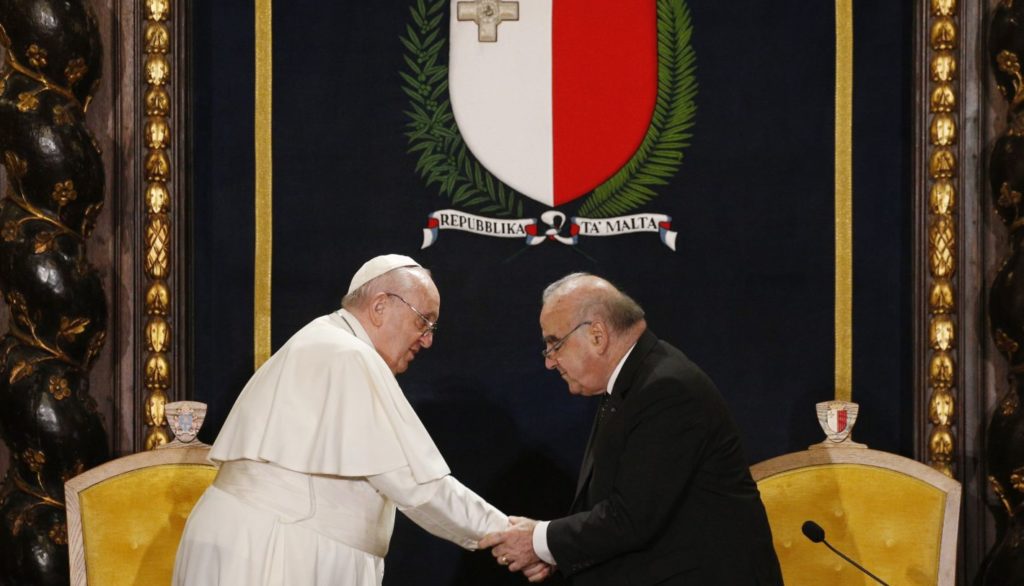This weekend, April 2 and 3, Pope Francis is on the island of Malta on his 36th international trip. A pilgrim in the footsteps of St. Paul, the Pontiff will visit a community that has always been welcoming and still today gives refuge to those who are forced to leave their homeland.
It is an opportunity "to go to the source of the proclamation of the Gospel" and to know and meet in person with a historic and living community, which continues to be committed "to welcoming so many brothers and sisters who seek refuge". With these words Pope Francis has asked the faithful gathered at Wednesday's General Audience to accompany him on this trip to the island of Malta, which is taking place this weekend, April 2 and 3.
Pope Francis' 36th apostolic journey, already postponed because of the pandemic, follows in the footsteps of St. Paul the Apostle, who was shipwrecked on the small Mediterranean island while on his way to Rome for trial. Even then, he found a people who treated him "with rare humanity," as recounted in chapter 28 of the Acts of the Apostles, which inspired the Visit.
The meetings
He is scheduled to deliver five speeches over two days, beginning with a speech to the Authorities and the Diplomatic Corps at the Presidential Palace in Valletta on the morning of his arrival. In the afternoon, there will be a prayer meeting at the Marian shrine of Ta' Pinu, Malta's most famous pilgrimage site, on the other small island of Gozo; the Pope will reach it by catamaran, a crossing of more than an hour.
Early Sunday morning, the Pontiff will hold a brief meeting with local Jesuits before heading to the Grotto of St. Paul in Rabat, where, according to tradition, the Apostle stayed in the year 60 after the shipwreck. He then stayed there for three months, preaching, baptizing and healing the sick, thus bringing Christianity to the island.
After the private prayer, Pope Francis will light the votive lamp and read a prayer to St. Paul; in the Basilica of the same name he will meet with 14 religious leaders and some sick and assisted by Caritas. He will stand before the Blessed Sacrament for the "prayer of mercy" and blessing.
Sunday's Mass is scheduled in the Piazzale dei Granai in Floriana, the town just outside the walls of the capital, Valletta. The church dedicated to St. Publius, the first bishop of Malta and the one who materially welcomed the shipwrecked Paul, is in front of the square.
The Pontiff will hold his last meeting with about 200 migrants at the "John XXIII - Laboratory of Peace" Center, an initiative founded in 1971 by Franciscan Dionisio Mintoff that today welcomes people coming mainly from Somalia, Eritrea and Sudan via Libya.
The Travel Logo
Reception, as we have said, will be the predominant theme of this visit. The logo of the trip itself shows hands pointing towards the Cross, coming from a boat at the mercy of the waves. The hands are intended to represent a sign of the Christian's welcoming of his neighbor and help for those in difficulty, abandoned to their fate. The boat, for its part, is a reference to the dramatic story of the shipwreck of St. Paul and the welcome of the Maltese, as we read in the Acts of the Apostles.
Pope Francis is the third Pontiff to visit Malta, after the two visits of St. John Paul II (1990 and 2001) and Benedict XVI in 2010. The island has six bishops, more than 700 priests and 48 seminarians; there are 800 professed nuns and some 1,250 catechists. The Church also runs 48 kindergartens and 24 training institutes.









